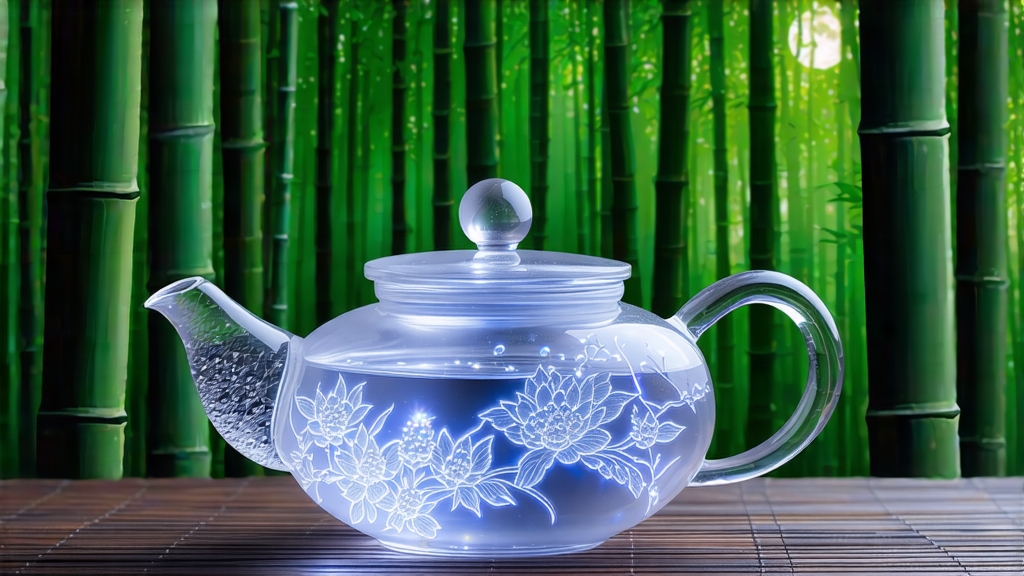
White tea is the quietest child in the Chinese tea family, and within that hush White Hair Silver Needle—Bai Hao Yin Zhen—whispers the softest. To the uninitiated it looks like a handful of fallen twigs; to the initiated it is moonlight trapped in plant form. This essay invites the international reader to listen to that whisper, tracing the cultivar from Tang-dynasty court records to the modern tea competition stage, decoding the minimalist craft that turns a single bud into liquid silk, and finally learning how to coax its perfume into a glass without bruising its shy soul.
-
Historical echoes
The first written trace appears in the Tang “Classic of Tea” (c. 760 CE), where Lu Yu praises “white cakes from Yongxing” sent as tribute. Those cakes were not today’s Silver Needle; they were compressed cakes of large leaves lightly oxidised. The modern bud-only style emerges only in the late 18th century, when the imperial court moved from compressed tea to loose tea and Fujian governors sought the most delicate possible offering. Legends speak of a plague year in Fuding when villagers drank the water in which newly sprouted buds had accidentally soaked; the fever subsided, and the buds were thereafter nicknamed “ling-zhen,” the spirit needle. Commerce soon replaced myth: by 1857 the first state-sponsored tea gardens were planted on the Taimu mountain slopes, and Silver Needle became one of the four initial commodities traded through the newly opened port of Fuzhou to Dutch and British buyers. In 1915 it won gold at the Panama-Pacific Exposition in San Francisco, sealing its global reputation. After the 1949 founding of the PRC the style almost vanished—Mao-era planners prioritised black tea for hard-currency export—until the 1990s when domestic affluence and Taiwanese investors revived the craft. Today Fuding alone produces 4,500 metric tons, yet fewer than 600 tons meet the strict bud-only standard exported as Silver Needle. -
Terroir and cultivar
Authentic Silver Needle is made from two clonal bushes authorised by the Fujian Department of Agriculture: Fuding Da Bai and Zhenghe Da Bai. The former yields plumper buds, the latter more aromatic polyphenols; blenders marry the two for balance. The microclimate is decisive. Taimu Mountain receives 180 foggy days a year; the diffused light forces the plant to synthesise more theanine, creating the famous umami sweetness. Soils are lateritic granite, acidic (pH 4.5–5.2) and rich in fluorine, which the bush stores in the bud’s trichomes—those tiny white hairs that give the tea its name. Elevation ranges from 400 m to 800 m; above that the buds become too slender and below it they grow too quickly, sacrificing concentration. Global warming has pushed the picking window earlier by roughly one week per decade since the 1980s, forcing farmers to plant shade nets to slow growth. -
The craft of “two withers and one fire”
Unlike green tea, Silver Needle is never pan-fired; its enzymatic profile is tamed only by air, sun, and the whisper of charcoal. Picking begins when the bud reaches 2.5–3 cm but before the leaf unfurls, traditionally between Qingming and Grain Rain (early April). Workers wear cotton gloves to avoid fingerprint bruises; buds drop into bamboo creels lined with silk. The first wither is outdoor: buds are laid on bamboo trays angled 15° toward the morning sun for twenty minutes, just long enough to reduce surface moisture by 8 %. The second wither moves indoors to a climate-controlled loft where temperature is held at 22 °C and humidity at 65 % for 24–36 h; here the bud loses 70 % of its weight, and faint oxidation edges the leaf margin with chestnut. Finally a gentle charcoal bake at 40 °C for thirty minutes halts enzymes while preserving the silver down. The entire cycle demands 48 h of uninterrupted attention; a single rainy afternoon can convert a batch into ordinary pekoe. -
Grading and authenticity
The State Standard GB/T 22291-2017 recognises three grades: Special, First, and Second. Special grade must be 100 % bud, uniform 30 mm length, and carry at least 10 % visible down by weight. Counter